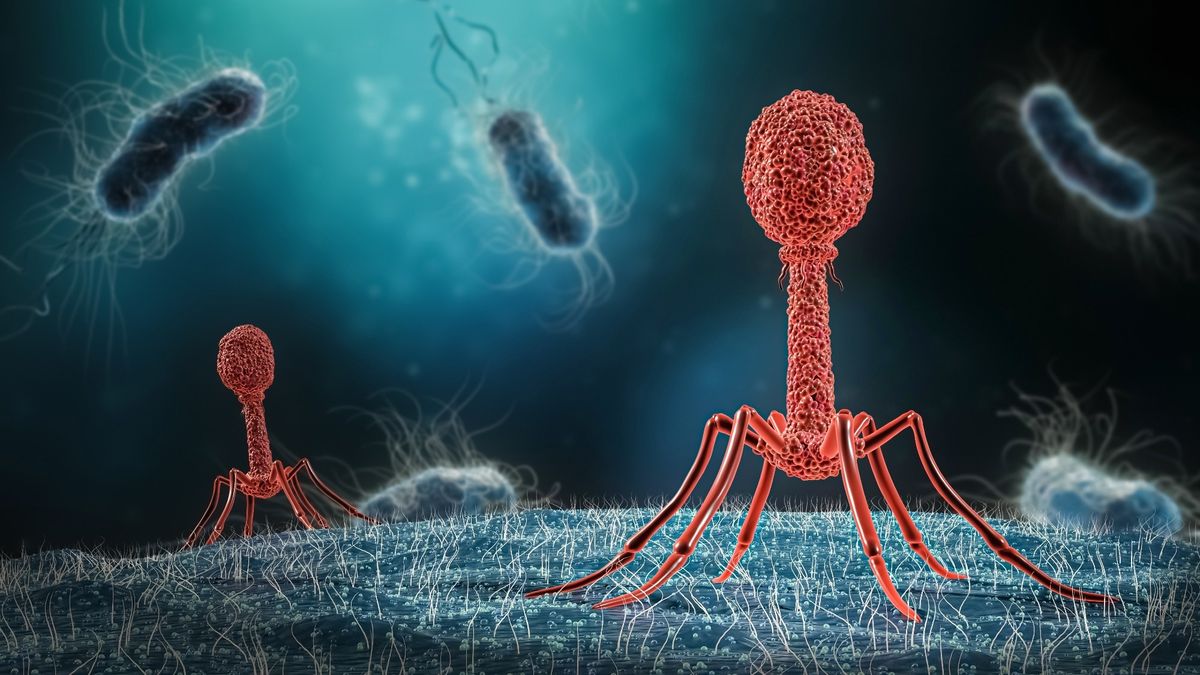
What are bacteriophages? These tiny viruses, often called phages, infect and destroy bacteria. Why are they important? They play a crucial role in controlling bacterial populations and are being researched for their potential in treating antibiotic-resistant infections. How do they work? Phages attach to bacteria, inject their genetic material, and hijack the bacterial machinery to produce more phages, eventually causing the bacterial cell to burst. Where are they found? They exist everywhere bacteria live, from soil to oceans to our own bodies. Can they help humans? Absolutely! Phage therapy offers a promising alternative to antibiotics, especially as antibiotic resistance becomes a growing concern. Ready to learn more? Let's dive into 32 fascinating facts about these microscopic warriors!
What Are Bacteriophages?
Bacteriophages, or phages, are viruses that infect bacteria. They play a crucial role in the microbial world and have fascinating characteristics.
-
Bacteriophages are the most abundant biological entities on Earth. They outnumber bacteria by a factor of 10.
-
The term "bacteriophage" comes from the Greek words "bacteria" and "phagein," meaning "to devour."
-
Phages were discovered independently by Frederick Twort in 1915 and Félix d'Hérelle in 1917.
-
These viruses are highly specific, often infecting only one species or even a particular strain of bacteria.
-
Phages have two main life cycles: the lytic cycle, where they destroy the host cell, and the lysogenic cycle, where they integrate their DNA into the host genome.
Structure of Bacteriophages
Understanding the structure of bacteriophages helps in grasping how they function and interact with bacteria.
-
A typical bacteriophage has a head, tail, and tail fibers. The head contains the genetic material.
-
The head is usually icosahedral, a shape with 20 triangular faces, providing stability.
-
The tail acts like a syringe, injecting the phage's DNA into the bacterial cell.
-
Tail fibers help the phage attach to specific receptors on the bacterial surface.
-
Some phages have complex structures with additional components like base plates and sheaths.
Bacteriophages in Medicine
Phages have potential applications in medicine, especially as alternatives to antibiotics.
-
Phage therapy, the use of bacteriophages to treat bacterial infections, was first used in the 1920s.
-
Phage therapy saw a decline with the advent of antibiotics but is now experiencing a resurgence due to antibiotic resistance.
-
Phages can be engineered to target antibiotic-resistant bacteria, offering a new line of defense.
-
Unlike antibiotics, phages can evolve alongside bacteria, potentially reducing the risk of resistance.
-
Phage therapy has been used successfully to treat infections in humans, animals, and plants.
Environmental Impact of Bacteriophages
Phages play a significant role in regulating bacterial populations in various ecosystems.
-
In oceans, phages help control bacterial populations, influencing nutrient cycles.
-
They contribute to the carbon cycle by lysing bacteria, releasing organic matter into the environment.
-
Phages can transfer genes between bacteria through a process called transduction, impacting microbial evolution.
-
In soil, phages help maintain microbial diversity by preventing any one bacterial species from dominating.
-
Phages are being explored for use in bioremediation, the process of using organisms to clean up environmental pollutants.
Bacteriophages in Biotechnology
Phages have numerous applications in biotechnology, from genetic engineering to food safety.
-
Phage display is a technique that uses bacteriophages to study protein interactions and develop new drugs.
-
Phages can be used to detect bacterial contamination in food and water, ensuring safety and quality.
-
They are employed in molecular biology as tools for cloning and gene editing.
-
Phages can be engineered to deliver therapeutic genes to specific cells, a technique known as phage therapy.
-
In agriculture, phages are used to control bacterial diseases in crops, reducing the need for chemical pesticides.
Fun Facts About Bacteriophages
Phages have some quirky and interesting aspects that make them unique.
-
Some phages have tails that contract like a spring to inject their DNA into bacteria.
-
Phages can be found in extreme environments, from hot springs to deep-sea vents.
-
The largest known bacteriophage, called "G," has a head diameter of 160 nanometers.
-
Phages can form plaques, clear zones on bacterial lawns, which are used to count and study them.
-
Some phages have been found to carry genes that can enhance the survival of their bacterial hosts.
-
Phages have inspired science fiction stories and even art, highlighting their intriguing nature.
-
Research on phages has led to the discovery of CRISPR, a revolutionary gene-editing technology.
Bacteriophages: Nature's Tiny Warriors
Bacteriophages, or phages, are fascinating viruses that target bacteria. These microscopic warriors play a crucial role in controlling bacterial populations in various environments. Their ability to infect and destroy bacteria makes them valuable in medical research, especially in the fight against antibiotic-resistant infections. Phages are also used in food safety to prevent bacterial contamination.
Understanding phages helps us appreciate their potential in biotechnology and medicine. They offer a natural, effective alternative to traditional antibiotics, which is becoming increasingly important as antibiotic resistance rises. Researchers continue to explore phages for their therapeutic applications, hoping to harness their power to combat bacterial infections.
In summary, bacteriophages are tiny yet mighty forces of nature. Their unique properties and potential applications make them a significant focus of scientific study. As we learn more about these viruses, their impact on health and the environment will likely grow.
Was this page helpful?
Our commitment to delivering trustworthy and engaging content is at the heart of what we do. Each fact on our site is contributed by real users like you, bringing a wealth of diverse insights and information. To ensure the highest standards of accuracy and reliability, our dedicated editors meticulously review each submission. This process guarantees that the facts we share are not only fascinating but also credible. Trust in our commitment to quality and authenticity as you explore and learn with us.
